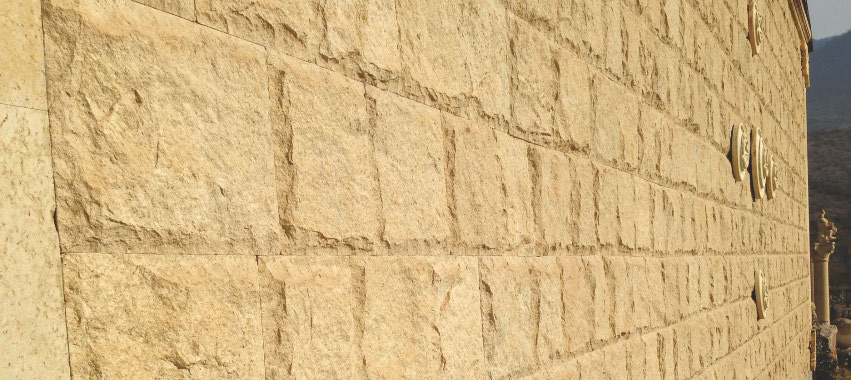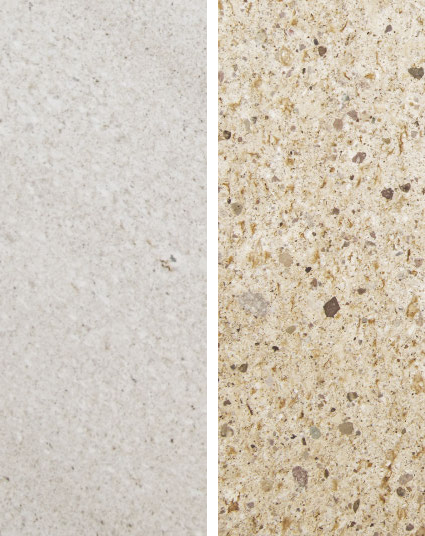FELSITE – A NEW STONE ON THE MARKET


Felsite is a hydro-volcanic rock that is classified as a type of tuff. We know very little about the origin of felsite. Most geologists believe that this mineral resulted from undersea volcanic processes. According to other theories, the rock is a pyroclastic tuff that has been exposed to hydrothermal processes. Microscopic examination of felsite revealed grains of minerals with traces of microfauna of marine origin, which suggests that the rock formed in the sea.
Among other places, felsite is quarried in Asia in the Caucasus. The deposits are pre-Quaternary sediments with very good mechanical and physical properties. Several exploratory wells were drilled to determine the colour of the stone. Depending on the location of the deposition, there are three basic types of felsite: spotted yellow, light yellow, and white. Interestingly, test have shown that regardless of colour, the various felsites have almost identical physical and mechanical qualities.
These qualities make felsite an attractive stone for the construction industry. The low density of the stone makes it easy to install on the façades. Felsite is also fully frost-resistant and sufficiently strong, and it is fairly easy to process.
Felsite is currently available in Poland in two colour varieties: Persian gold and Persian green.

Physical and mechanical qualities:
– density – 1970 kg / m3
– absorbency – 10.65%
– flexural strength – 9.8 MPa
– crushing strength – 58 MPa
– porosity – 19.9%
– decrease in flexural strength after 20 cycles of freezing / thawing – 16.8 %
– breaking load – 1400 N
The tests were carried out in the Stones and Aggregates (Artificial Aggregates) Laboratory in Strzegom.
Source: Kurier Kamieniarski
Author: Kurier Kamieniarski | Published: 9.5. 2016
